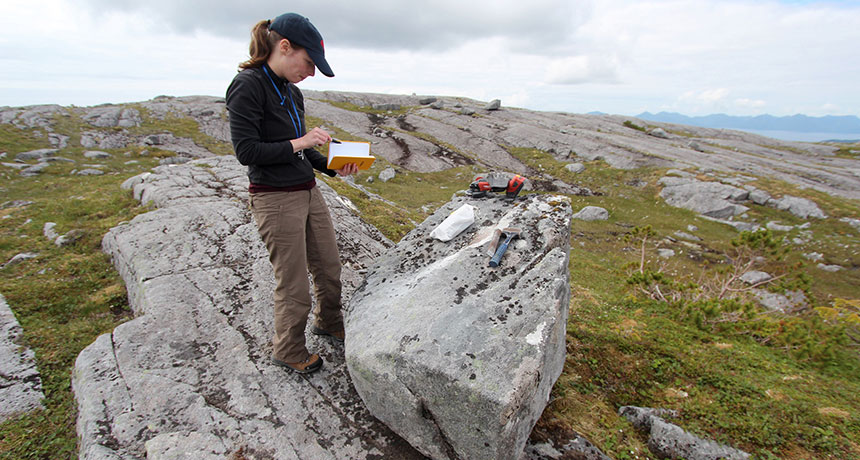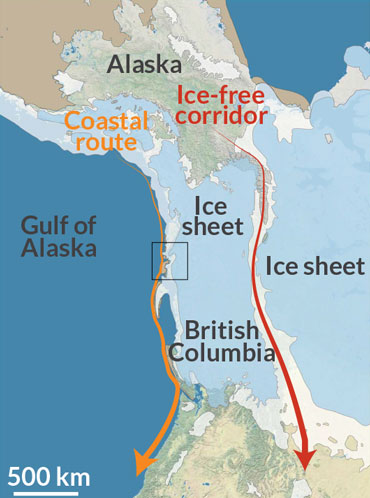The first Americans could have taken a coastal route into the New World
Glacial retreat had cleared a path along Alaska’s shores by 17,000 years ago

DEICED PASSAGE Rocks on an Alaskan island display smooth surfaces covered by cracks created when ice once moved over them. Alia Lesnek (shown) and colleagues have determined that ice on this and three nearby islands retreated about 17,000 years ago, just before ancient humans colonized the Americas.
Jason Briner







